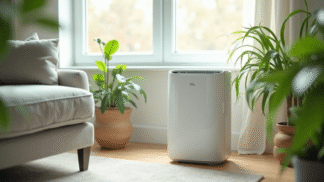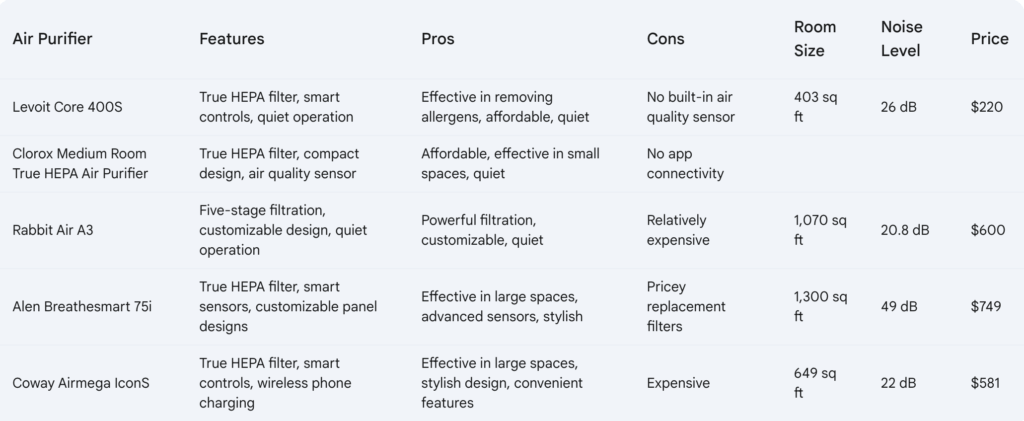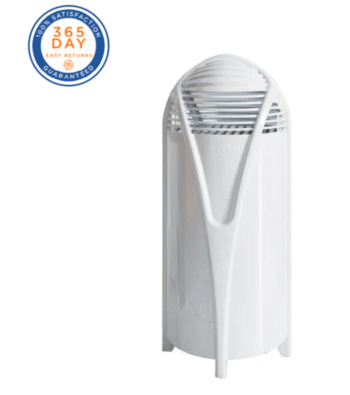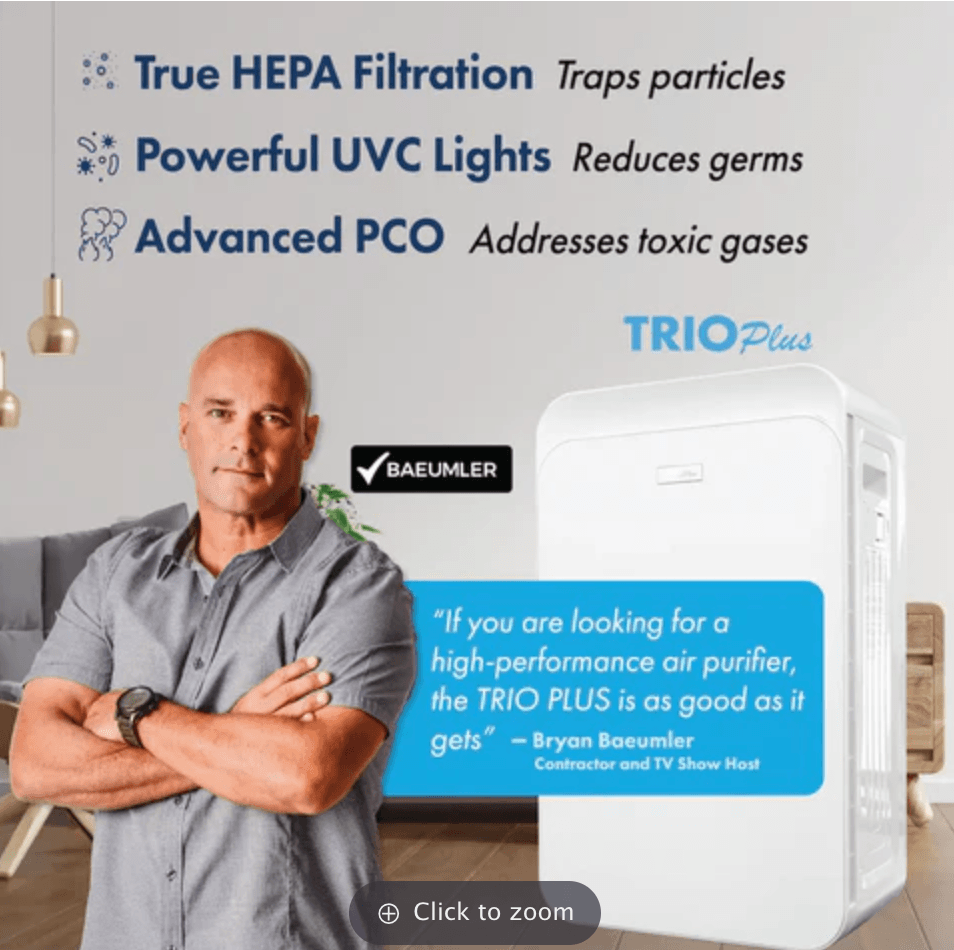Smart air purifiers are popping up all over homes for a big reason; they don’t just boost air quality, they might also play a role in giving your indoor plants what they need to thrive. If you’re someone who loves filling rooms with greenery, or maybe you just want your one stubborn pothos to look happier, understanding how air quality influences plant health is actually pretty handy. I’ll walk you through the basics, what to watch for, and easy steps to combine tech and nature to help your indoor plants flourish.

Why Indoor Air Quality Affects Plant Health
While we all know clean air feels good, not everybody realizes that air quality makes a big difference for houseplants. Daily, indoor air can carry pollutants like smoke, dust, and volatile organic compounds (VOCs) from cleaning sprays, paint, cooked food, or even new furniture. These contaminants don’t just affect people; plants can struggle, show slower growth, or develop discolored leaves if the air around them isn’t right.
Plants rely on good air for two main things: clean carbon dioxide to fuel photosynthesis and moisture in the air (humidity) for healthy, even growth. Bad air, heavy with particles or chemicals, can interfere with both. Some studies even suggest long exposure to urban indoor air lowers a plant’s resilience and slows recovery from basic stresses. Combined with low humidity, it’s a recipe for picky plants to start looking pretty sad.
On top of all this, indoor environments can accumulate dust much more quickly than many realize. That layer on your bookshelves also lands on your plant leaves, where it blocks out the sunlight necessary for vital processes like photosynthesis. Over time, even hardier species can show signs of stress, like dull leaves or sluggish new growth.
How Smart Air Purifiers Fit Into the Picture
Smart air purifiers are more than regular air cleaners; they’re Wi-Fi connected, can run schedules, show you real-time air quality, and often adjust themselves based on what they sense. Units with HEPA filters and activated carbon can trap both dust and nasty chemicals floating around inside your home.
Cleaner air benefits both you and your plants. For greenery sitting near a kitchen, in a new apartment, or even next to a window that overlooks heavy traffic, a smart air purifier can cut out a ton of the stubborn pollutants that otherwise settle on leaves and soil. Purifiers that let you track air quality via an app give you a better idea of how the air really changes day to day and reassure you that your plants’ environment is staying steady.
Additionally, some smart purifiers record air quality trends over time. That means you can notice patterns, like pollution spikes after cleaning, or dips in humidity during winter heating, and adjust your plant care routines accordingly. This level of insight really helps if you’re juggling several types of plants in different rooms.

Getting Started: Choosing the Right Smart Air Purifier for Plant Lovers
It’s easy to get lost in all the gadgety features out there, but a few things matter most when you want to protect both your own lungs and your plants’ delicate leaves:
- HEPA Filtration: This cuts way down on airborne particles like pet dander, pollen, and dust that coat plant leaves and block sunlight.
- Activated Carbon Filters: These are good for neutralizing VOCs—chemicals that can irritate tender plant tissue and roots over time.
- Real-Time Air Quality Monitoring: Being able to check air quality—via color-coded LEDs or your phone—helps you spot if pollution levels spike quickly (like after painting or cleaning).
- Coverage Area: Make sure your purifier matches the square footage of the room where most plants live. Some smaller units only clean a compact office, while bigger machines handle open living rooms.
- Noise Level: Quiet models are easier to leave running overnight, which is great since most plants do their respiration at night.
Some brands market air purifiers with added humidity control, which is also really helpful; many houseplants prefer moderate to high humidity. Too dry air dries out leaves and soil, while a little extra humidity often leads to lush, glossy foliage. So, it’s worth checking if a purifier comes with a humidifying feature, or pairing your device with a separate, plantsafe humidifier.
Another thing to look for is filter replacement reminders, either through an app or a light on the unit. Fresh filters maintain the highest performance, giving your plants and your home the cleanest possible air at all times. Some smart purifiers even ship filter subscriptions directly to your door, making maintenance super easy.

Free replacement filter and lamp with the purchase of Trio Plus
Making the Most of Smart Air Purifiers and Plants
Setting up a smart air purifier is straightforward, but a couple of tips go a long way if you’re keen on seeing happier, healthier plants around your space:
- Location Is Key: Place your smart purifier close to high-traffic or pollution-heavy areas, like near kitchens, windows facing busy streets, or wherever you notice a lot of dust. If you have plant shelves, putting the purifier nearby helps catch particles before they settle on leaves.
- Keep Filters Fresh: Dirty filters don’t trap pollutants; once they’re clogged, air just bypasses the system. Set reminders (or let the purifier do it) to change filters as needed based on your home’s air quality.
- Monitor Humidity: Some smart air purifiers display indoor humidity as well as air quality. Try to aim for a range of 40-60% humidity for most houseplants, tweaking with a humidifier if things get too dry.
- Watch for Plant Reactions: Strong improvement in leaf color, fewer spots, more new growth, or less powdery dust on the leaves can signal that your cleaner air is making a difference.
It’s also important to remember to dust plant leaves regularly. Even with a purifier running, dust in the home can build up quickly, especially if you have pets or open windows often. A quick wipe down with a damp, soft cloth keeps leaves clear to soak up as much light as possible.
Potential Pitfalls and How to Avoid Them
Even with the best intentions, mixing tech with nature sometimes comes with a few hiccups. Here are common things I’ve noticed, plus simple fixes:
- Not All Cleaners Are the Same: Avoid ionizer-type purifiers. They can produce ozone as a byproduct, which isn’t great for plant (or human) lungs, especially in closed rooms.
- Humidity Can Drop: Some air cleaners dry out the air, which stresses ferns, calatheas, or orchids. If you notice brown tips appearing after installing a purifier, run a humidifier or group plants closer together to help balance things out.
- Uneven Airflow: Plants sitting directly in a stream of purified air may show signs of wind stress (curled or crispy leaves). Angle the device so it circulates air across the whole room rather than blasting any plant directly.
- Over-Reliance on Tech: Relying solely on a purifier won’t fix other common plant issues like underwatering, poor lighting, or root rot. Keep up with regular plant care, and use air purification as a bonus, not a magic fix.
Tips for Combining Indoor Gardening with Smart Tech
After playing around with different setups, here’s what I’ve found most effective for a healthy indoor jungle:
- Pairing smart sensors (for air, humidity, and light) with your air purifier gives you a better all-around view of plant conditions.
- Regularly wipe plant leaves with a damp cloth to remove any particles that even the best purifier can’t catch.
- Keep an eye on where pets spend the most time; animal dander collects fast, so focusing your purifier in those zones can prevent sticky residues on leaves.
Another handy trick is to rotate your plants every week or so. Not only does this make sure they get more even sunlight, but it helps expose hidden dusty sides to your purifier’s air flow. Coupled with strategic placement of both tech and plants, you’ll get more uniform results in air quality and plant health.
Case Studies: When Air Quality Makes a Noticeable Difference
During a recent move to a place with old carpets, I noticed my prayer plant instantly started looking worse. New leaves wilted and older ones faded faster. After running a smart air purifier (with both HEPA and carbon filters) for a week, things picked up. Dust layers on the leaves stopped accumulating, and the plant started pushing out firmer, upright new growth.
Another friend living right above a busy road saw her rubber tree losing leaves quickly. After adding an air purifier, there was less residue on the foliage, and both the rubber tree and nearby monstera soon rebounded, showing more even growth and fewer mysterious brown spots.
Yet another example: someone with lots of succulents noticed shallow root rot and slow recovery during winter, when windows stayed shut. Once they started using a wifi air purifier with humidity monitoring, they noticed their soil dried more evenly and leaves perked up by spring.
Frequently Asked Questions
Here are some things I often get asked by friends and fellow indoor gardeners who are curious about combining smart air purifiers with their plants:
Question: Can a smart air purifier replace all plant care for better growth?
Answer: Air purifiers create a healthier environment, but plants still need proper lighting, watering, and nutrients. Consider air purification a support tool, not a miracle worker.
Question: Will smart air purifiers remove good things like plant-released oxygen?
Answer: Air purifiers don’t strip out beneficial gases like oxygen. Instead, they target larger particles and chemicals. Your plants will be fine and may actually fill the space with more oxygen since they’re healthier.
Question: What plants benefit the most from improved indoor air?
Answer: Fussy varieties, like calatheas, ferns, and most tropical plants, tend to see the biggest boost since they struggle in dusty or polluted air. But pretty much any houseplant enjoys it!
Final Thoughts on Tech and Plant Wellness
Piling technology and houseplants together can feel odd at first; nature versus gadgets, but when done right, they complement each other. Smart air purifiers knock out the kind of pollution that holds back growth, and that lets you enjoy greener, longer-lasting plants. With a little attention to placement, maintenance, and awareness, you can set up your own space so everyone in the room—roots, leaves, and people—breathes easier.
Healthy indoor air paired with thriving houseplants isn’t just nice to look at; it’s a sign of a comfortable home. If you want your plants to show off their best, looking into a smart air purifier is well worth considering. Combined with solid plant care, you’ll get happier plants—and better air for you, too.

Trio Plus 5 Stage UVC Air Purifier
